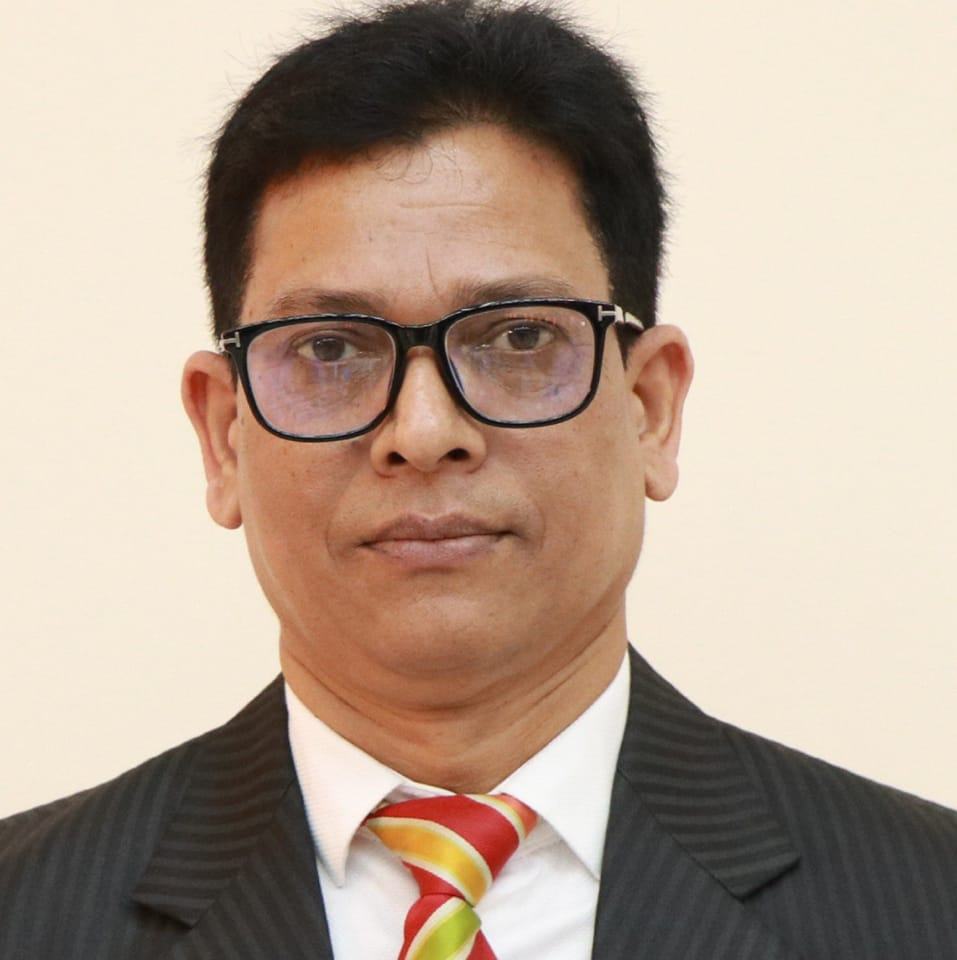Sequence stratigraphic architecture and facies analysis of the Oligocene Barail Formation, Surma basin, Bangladesh: implications for depositional dynamics and basin evolution
-
 https://doi.org/10.14419/f4ma9q98
https://doi.org/10.14419/f4ma9q98
Received date: November 11, 2024
Accepted date: November 28, 2024
Published date: December 5, 2024
-
Barail Formation; Depositional Environments; Parasequence Sets; Sequence Stratigraphy; Surma Basin. -
Abstract
This study systematically explores the sequence stratigraphy and depositional history of the exposed Oligocene Barail Formation within the Surma Basin, northeastern Bangladesh, an area recognized for its petroleum potential. Using integrated field observations, sedimentological analysis, and sequence stratigraphy, the research examines the influence of tectonics, climate, and eustatic sea-level fluctuations on sedimentary architecture. A total of ten lithofacies were identified and grouped into three facies associations, indicating fluvial to tide-dominated braided channel systems. The Barail Formation is categorized within Megasequence 2 (MS-2), characterized by a regressive erosional surface (RES) at its base and a transgressive erosional surface (TES) at its top, indicating a shift from progradational to retrogradational stacking patterns. Increased terrigenous sedimentation between 38 to 21 million years ago is attributed to regional tectonic uplift and climate change. The analysis revealed six parasequence sets corresponding to distinct systems tracts: PS1 (lowstand) shows regressive sedimentation, PS2 and PS3 (transgressive) exhibit retrogradational stacking, while PS4 and PS5 (highstand) demonstrate progradational stacking patterns. PS6 represents a regressive phase marked by lateritic conglomerates. These insights enhance the understanding of the Barail Formation’s depositional environments and contribute to refining sequence stratigraphic models critical for foreland basin hydrocarbon exploration.
-
References
- M. Alam, M.M. Alam, J.R. Curray, M.L.R. Chowdhury, M.R. Gani, An overview of the sedimentary geology of the Bengal Basin in re-lation to the regional tectonic framework and basin-fill history, Sedimentary Geology 155(3-4) (2003) 179-208. https://doi.org/10.1016/S0037-0738(02)00180-X.
- R.G. Walker, N.P. James, Facies Models: Response to Sea Level Change, Geological Association of Canada, 1992.
- O. Catuneanu, Principles of Sequence Stratigraphy, Elsevier, 2006.
- A.D. Miall, The Geology of Stratigraphic Sequences, 2nd Edition, Springer, 2010. https://doi.org/10.1007/978-3-642-05027-5.
- L. Yang, W. Xiao, M.J.J. Rahman, B.F. Windley, K. Schulmann, S. Ao, J.E. Zhang, Z. Chen, M.S. Hossain, Y. Dong, Indo–Burma pas-sive amalgamation along the Kaladan Fault: Insights from zircon provenance in the Chittagong-Tripura Fold Belt (Bangladesh). GSA Bull 132(9–10) (2020) 1953–1968. https://doi.org/10.1130/B35429.1.
- S. Biswas, B. Grasemann, Quantitative morphotectonics of the southern Shillong plateau (Bangladesh/India). Aust J Earth Sci 97 (2005) 82–93.
- Y. Najman , M. Bickle, M. B. Fadel, A.C.E. Garzanti, M. Paul, J. Wijbrans, E. Willett, G. Oliver, R. Parrish, S.H. Akhter, R. Allen, S. Ando, E. Chisty, L. Reisberg, G. Vezzoli, The Paleogene record of Himalayan erosion: Bengal Basin, Bangladesh, Earth and Planetary Science Letters 273 (2008) 1–14. https://doi.org/10.1016/j.epsl.2008.04.028.
- P. Evans Tertiary succession in Assam. Trans Min GeolInst India 27(1932), 155–260.
- J. Holtrop, J. Keizer, Some aspects of the stratigraphy and correlation of the Surma Basin wells, East Pakistan, ECAFE Miner Resour Dev Ser 36 (1970), 143-154.
- F. Khanam, M.J.J. Rahman, M.M. Alam, R. Abdullah, Sedimentology and basin‑fill history of the Cenozoic succession of the Sylhet Trough, Bengal Basin, Bangladesh, International Journal of Earth Sciences 110 (2020), 193–212. https://doi.org/10.1007/s00531-020-01946-1.
- S.Y. Johnson, A.M.N Alam, Sedimentation and tectonics of the Sylhet trough, Bangladesh, Geological Society of America Bulletin 103 (1991), 1513–1527. https://doi.org/10.1130/0016-7606(1991)103<1513:SATOTS>2.3.CO;2.
- K.U. Reimann, Geology of Bangladesh, Gebruder Borntraeger, Berlin (1993).
- M. Alam, M.M. Rahman, M.Y. Gazi, J.H. Lupin, M.N. Zaman, Depositional environment and reservoir prospect analysis of Barail sandstone exposed in the northeastern part of Bangladesh, The Dhaka University Journal of Earth and Environmental Sciences 12 (1) (2023), 1–15. https://doi.org/10.3329/dujees.v12i1.70557.
- M. Alam, M.M. Alam, J.R. Curray, M.L.R. Chowdhury, M.R. Gani, An overview of the sedimentary geology of the Bengal Basin in re-lation to the regional tectonic framework and basin-fill history, Sedimentary Geology 155 (2003), 179–208. https://doi.org/10.1016/S0037-0738(02)00180-X.
- A. Maltman, The geological deformation of sediments, Springer, New York (2012).
- A.D. Miall, The geology of stratigraphic sequences. Springer, New York (2010). https://doi.org/10.1007/978-3-642-05027-5.
- F. Khanam, M.J.J. Rahman, M.M. Alam, R. Abdullah, Sedimentology and basin‑fill history of the Cenozoic succession of the Sylhet Trough, Bengal Basin, Bangladesh, International Journal of Earth Sciences 110 (2020), 193–212. https://doi.org/10.1007/s00531-020-01946-1.
- A.D. Miall, Lithofacies types and vertical profile models in braided river deposits: a summary, Geological Survey of Canada Paper 78-27 (1977), 1–18.
- J.D. Collinson, H.G. Reading, Sedimentary environments: processes, facies and stratigraphy. Alluvial Sediments. Blackwell Scientific Publications, Oxford, pp 37-82. (1996).
- R.W. Dalrymple, Facies models 4. Tidal depositional systems. Geological Society of Canada, pp 201–231 (2010).
- A.K.M.E. Haque, W.S. Downey, M.M. Alam, M.A. Islam, M.O. Faruk, R. Islam, Eocene-Miocene stratigraphy of the Surma Trough, Bengal basin: a sequence stratigraphic approach, Petroleum and Coal 61(3) (2019), 490-507.
- H.E. Reineck, F. Wunderlich, Classification and origin of flaser and lenticular bedding, Sedimentology 11(1-2) (1968), 99-104. https://doi.org/10.1111/j.1365-3091.1968.tb00843.x.
- G. Nichols, Sedimentology and Stratigraphy, Wiley-Blackwell, Oxford (2009), 419 pp.
- H.G. Reading, Sedimentary Environments: Processes, Facies and Stratigraphy, 3rd ed., Blackwell Science (1996).
- O. Catuneanu, V. Abreu, J.P. Bhattacharya, M.D. Blum, R.W. Dalrymple, B.A. Eriksson, C.R. Fielding, W.L. Fisher, W.E. Galloway, M.R. Gibling, et al., "Sequence stratigraphy: methodology and nomenclature," Newsletters on Stratigraphy 44 (3) (2011), 173-245. https://doi.org/10.1127/0078-0421/2011/0011.
- H.W. Posamentier, P.R. Vail, "Eustatic controls on clastic deposition II—sequence and systems tract models," Sea Level Changes: An Integrated Approach 42 (1988), 125-154. https://doi.org/10.2110/pec.88.01.0125.
- D. Emery, H.F. Myers, Sequence Stratigraphy: An Introduction, W.H. Freeman and Company, 1996. https://doi.org/10.1002/9781444313710.
- Bristow, C.S., Best, J.L., The influence of sediment supply on the dynamics of high-energy, gravel-bed rivers: Insights from the River Wye, UK, Sedimentology 40(6) (1993), 1123–1145.
- B.U. Haq, J. Hardenbol, P.R. Vail, Chronology of fluctuating sea levels since the Triassic, Science 235(4793) (1987), 1156–1167. https://doi.org/10.1126/science.235.4793.1156.
-
Downloads
-
How to Cite
Md. Abdur Rahman, & Md. Shafiqul Alam. (2024). Sequence stratigraphic architecture and facies analysis of the Oligocene Barail Formation, Surma basin, Bangladesh: implications for depositional dynamics and basin evolution. International Journal of Advanced Geosciences, 12(2), 115-126. https://doi.org/10.14419/f4ma9q98

